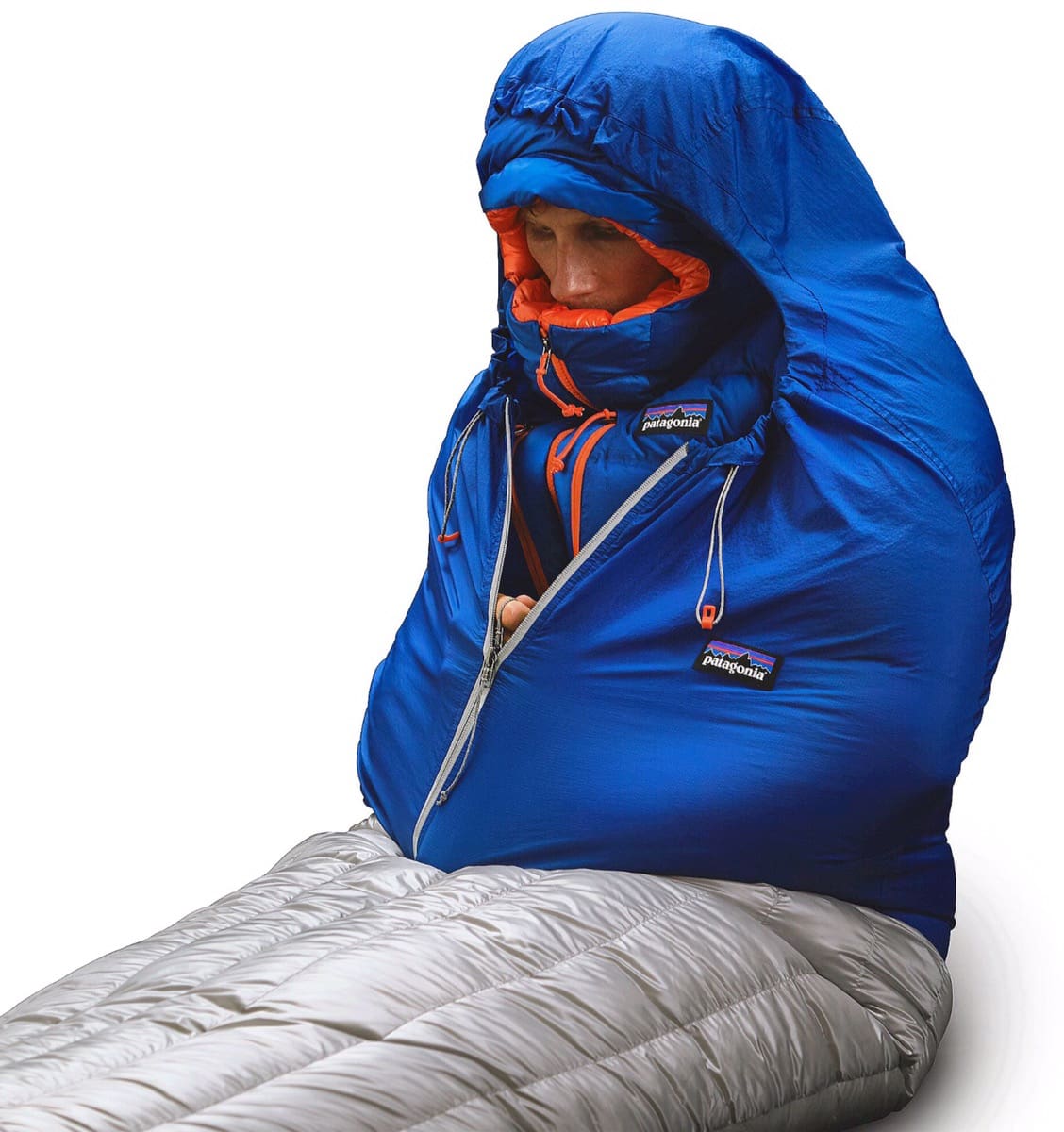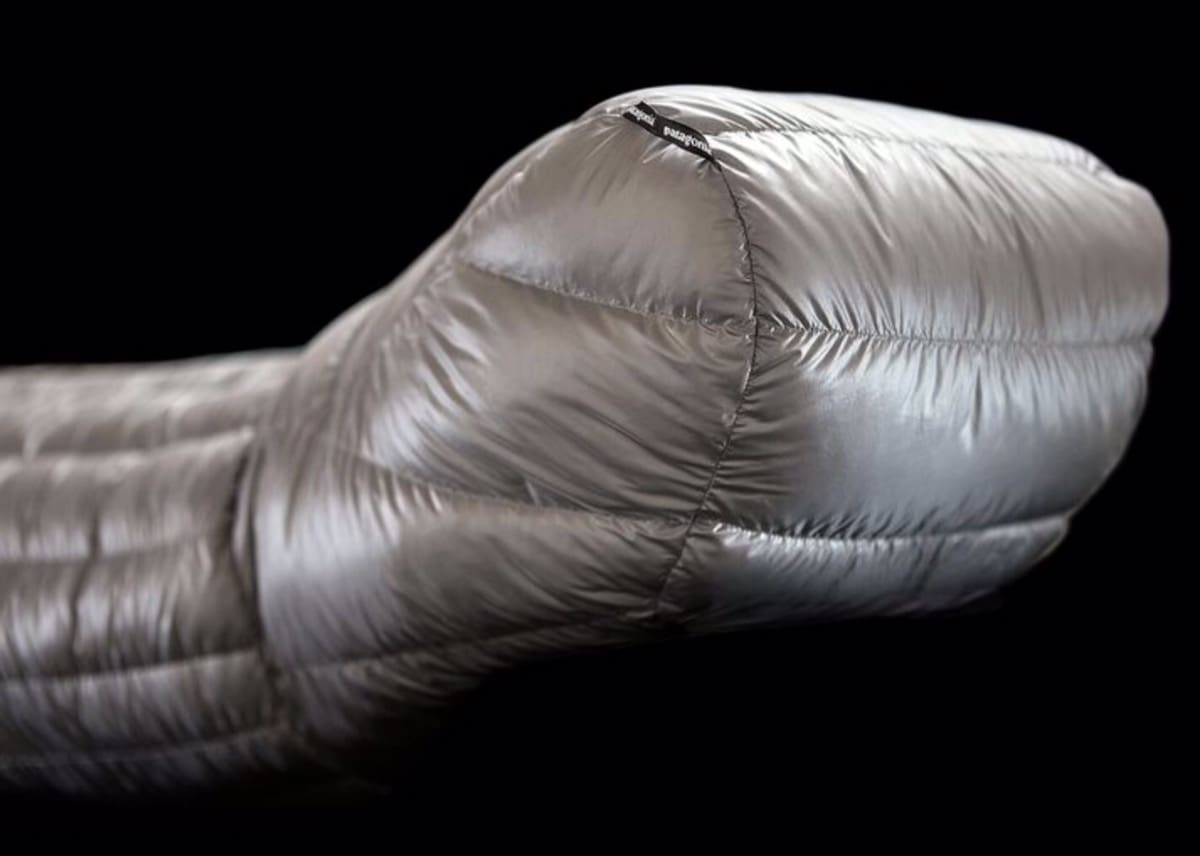There have been many so-called Elephant Foot,sleeping bags in the market over the years. We’ve even mentioned a few of these designs which are essentially, the bottom half of the bag, with the top half being a level 7-style insulated belay parka. The idea with an Elephant Foot is to reduce weight and bulk and is often used for mountaineering. Oftentimes, these bags ride mid-abdomen and use elastic or shoulder straps, to stay in place. Additionally, the bottom is often closed with shock cord so the wearer can open it up and walk around in it.
The Hybrid is insulated with 850-fill-power Traceable Down, so it’s no slouch when it comes to keeping the cold at bay. It’s also going to be quite packable, although maybe not the best choice in cold/wet conditions. The shell is Pertex Quantum, an underutilized fabric here in the US which is highly wind and water resistant.
In the case of the Hybrid, it incorporates a torso fashioned from a single layer of windproof 1.2oz, 15D 100% nylon ripstop fabric with a DWR finish. It features a waist level drawstring as well as drawstrings at the hood along with a half-zip front opening to reduce bulk. The single layer torso works with the parka beneath to shed weather and trap heat.
Earlier, I mentioned that many of the half-bags on the market have an open bottom, but the Hybrid incorporates a footbed designed to acoid cold spots.
I really like the design of the Hybrid, but as it was designed for civilian mountaineering, the Viking Blue color scheme leaves a bit to be desired for tactical use, despite the cool color name. Maybe it will catch the eye of a military customer and we’ll see it in Alpha Green.
Made in China, it weighs just 490 g (17.3 oz). The Hybrid from Patagonia is offered in Short, Regular and Long lengths.
www.patagonia.com/product/hybrid-sleeping-bag-regular
Tags: Patagonia





Nanok has had a similar system where your down jacket and pants need to be used with the sleeping bag in cold conditions. Mainly aimed at OP/recon dudes.
I’d wonder what temperature rating they are aiming for with the system, since I can’t find anything on their site.
Yeah, the lack of a rating is a bit of a concern.
Most likely that’s because it is supplemental to an already worn layer of gear. I would love to see a rating, but really, more in a way of how armor is rated, what is it as:
1. Stand Alone
2. ICW Level 7 (as shown)
3. ICW Level 5
4. ICW Level 4
etc…
Patagonia being one of the companies that helped solidify the layering system and helped the military develop their’s. I’m sure they have not overlooked ratings, but just seeing this and thinking application combined with existing systems it makes me think this isn’t simply something that gets rated as stand alone, but is supplemental to other systems. It will be interesting to see how they tackle this.
I agree, it’s would be interesting to see what the bag + their Grade VII jacket (which it was designed to be used with) ends up having as a rating. Since the same collection/system also has 2 base layers, they could also be rated for warmer weather use.
Sleeping bag testing isn’t expensive, so I am wondering if it’s the 2 part system that is the issue ie doesn’t meet the specs of the test and that would make it “impossible” to get a rating.
Steve house rocks!
O’Doyle Rules! …..Sorry, I couldn’t help myself.
House is a legend in the alpine community. If he backs it then it’s legit. Fast and light alpine missions , I wouldn’t take it to Denali or like expeditions.
I was thinking that one could just wear this system inside a camo bivy bag and the Viking Blue would be much less of an issue.
That’s what I did with my civi, down bag. Put it inside the USGI bivy and no one was the wiser.